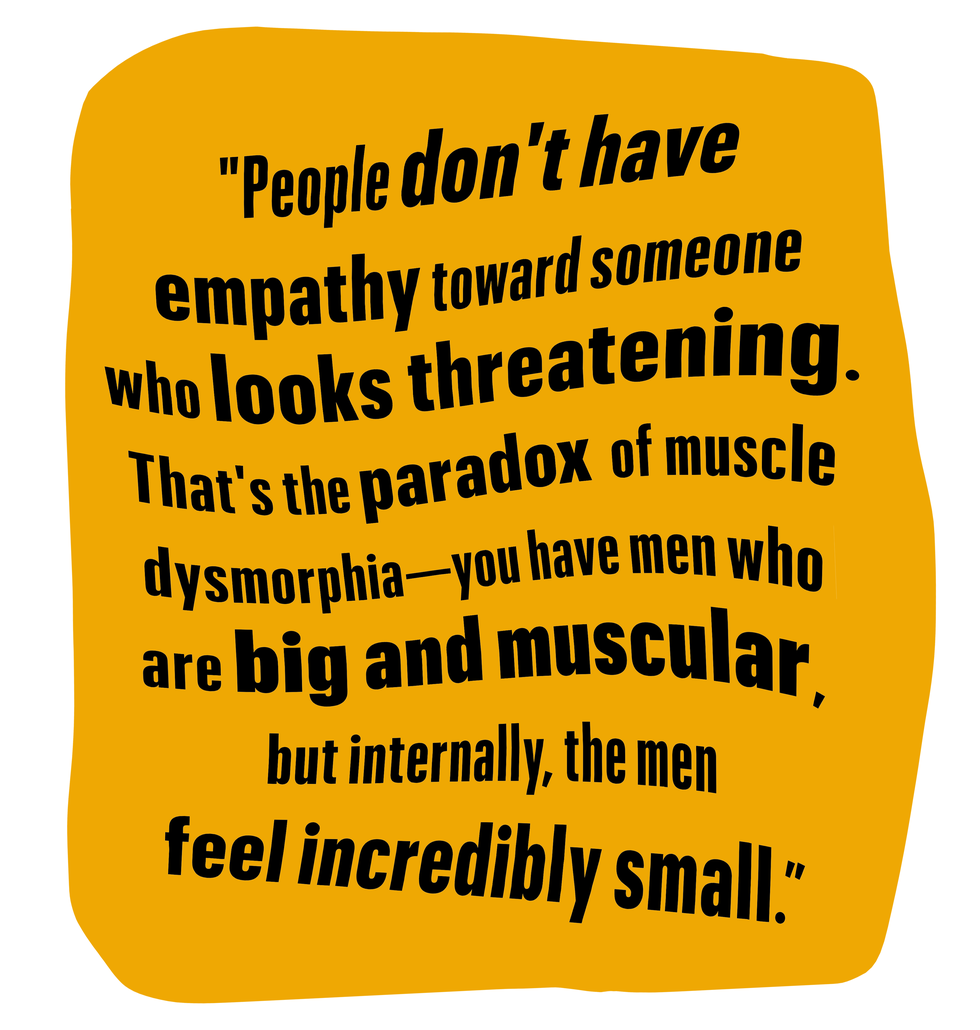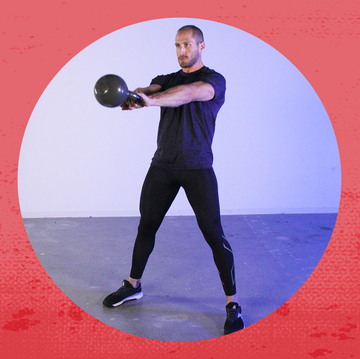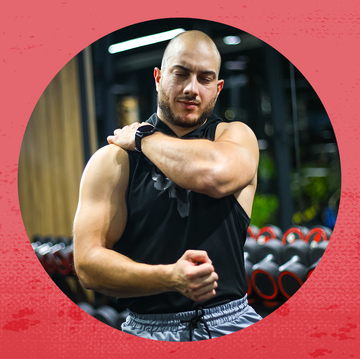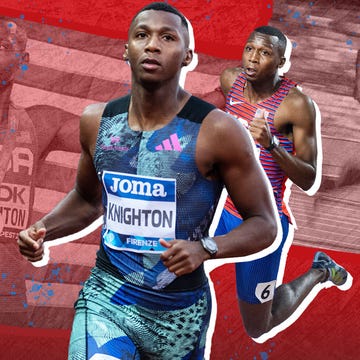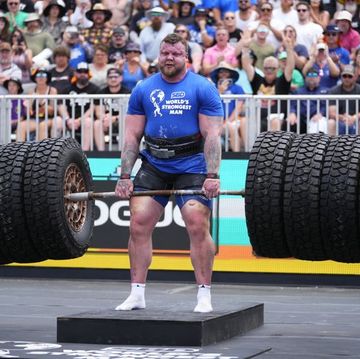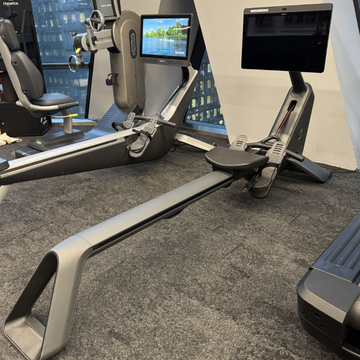AS STRANGE AS IT SOUNDS, Diego Mercado’s journey toward a crisis began at a movie theater in the Bronx when he was 16 years old. Mercado was sitting in a multiplex when he saw a dude rip off his shirt in a Twilight movie. “Like, you see that awesome aesthetic body. Like, oh man, I want that.” Right there, he decided that he had to build a six-pack, too. He wanted to have a body that everyone knew was in great shape.
So the sophomore hit the weights. At first, he worked out at Planet Fitness. But as he got more serious, he sought out a more serious gym. Star Fitness in the Bronx was hardcore—full of competitive powerlifters, bodybuilders, and other guys who made strength training part of their identity. He was reading every PubMed study on testosterone and anabolic protocols when he should have been attentive in his high school classes. Mercado immersed himself in gym culture—feeling passion and peer pressure to look the part. He was way bigger and stronger and fitter looking than he had been before, but he noticed that some of his friends who didn’t seem as committed as he was were making faster progress. He desperately wanted to make greater gains.
After learning he had low testosterone levels, Mercado wound up taking a stack of anabolic compounds without medical supervision. He became obsessive about training and dieting. Mercado was crushing two or even three sessions at the gym daily. To micromanage his food intake, he was toting a scale to the Mexican and Cuban restaurants where he worked as a server and bartender. He also was camping out on Instagram—exuberantly sharing his quest for muscularity and mainlining the fitness content of other ripped guys. His Instagram account, which he’d later scrub, was packed with images that showed his arms stretching the limits of his T-shirts and his big-screen-worthy abs.
“It felt like going from Clark Kent to Superman,” Mercado says. When he was at the gym, he suddenly felt like he was always his best self; his confidence and energy levels skyrocketed; the compliments from those around him poured in. He scuttled plans to become an engineer and focused on fitness. “I became so obsessed. It took over my life without me noticing it. I literally became a different person.”
But in July 2019, that person wound up having the scare of his life. He was out late at a club on a Saturday night with restaurant friends when he started to feel unnaturally hot. Though he’d felt hot from the steroids before, it was nothing like this. He went home and crashed but woke up in a pool of sweat. His head was pounding. “I felt like I was dying,” Mercado recalls. He knew he had to get to the emergency room. There, as he lay on a gurney, doctors told him that his hemoglobin count was so high that his blood was getting sludgy.
All Mercado had ever wanted to do was get strong. He had no idea that he would eventually grapple with the consequenc- es of muscle dysmorphia (MD), a disorder that’s characterized by a desire to get mus- cular and lean and that can take over your life. In one sense, Mercado is lucky—he got his wake-up call before he had a heart attack or stroke. Now 22, he remains passionate about fitness and works as a personal trainer, and he can do so with the wisdom of someone who knows how to do it right. Still, Mercado carries a heavy burden. His hormone production may be altered for life—affecting everything from testosterone to serotonin. And it’s tough to be a personal trainer or fitness influencer in this social-media age if you’re not jacked.
When asked what advice he might offer young men about going all in to get muscular after his struggle with dysmorphia, Mercado’s voice cracks. “Don’t do it unless you’re okay losing everything and everyone you care about,” he says. “You can wind up at less than zero when you’re done.”
MUSCLE DYSMORPHIA IS an enigma—studied for decades but still not seen as a public-health crisis like eating disorders. Researchers estimate that MD impacts about one out of every 500 American men. But those numbers may not reflect the large group of men who don’t meet the clinical criteria yet struggle with urges to get bigger. One 2019 University of California, San Francisco study of young American adults found that more than a fifth of men engaged in muscularity-based disordered eating behaviors. And a 2018 study of adolescents found that roughly 40 percent of boys who were of normal weight were actively trying to gain weight and get bigger. We don’t know how many of those boys were engaging in risky behavior to get the body they want, but we know it’s not zero. Other research has indicated that up to 54 percent of competitive bodybuilders and 13 percent of men in the military suffer from MD.
Men with muscle dysmorphia are preoccupied with feeling small or insufficiently muscular. But to meet the criteria, it takes more than dissatisfaction with your body or a fixation on lifting, says Jason Nagata, M.D., an assistant professor of pediatrics at UCSF. “Muscle dysmorphia comes with an impairment in daily functioning,” he says. “Men with MD obsess about weight, food, exercise, and/or appearance in a way that worsens their quality of life.” This typically translates into feelings of significant distress and a disruption of one’s personal, work, or school life.
Most guys who’ve lifted weights seriously have some perspective on the problem. That urge to get more muscular; the lurking frustration if progress comes slowly; the way you can slide into overtraining or obsessive dieting to reach goalposts that keep shifting; the way you can feel consumed with wanting to get bigger. There’s even a classic bodybuilding expression that encapsulates the underlying preoccupation: “The day you start lifting is the day you become forever small.”
Muscle dysmorphia has been in the news lately, framed as a disorder of the moment. While there’s no epidemiological data yet substantiating a higher incidence of MD, all the experts interviewed for this story see evidence that the problem is growing. So what’s changed? The idealization of the male physique is hardly new. Arnold’s pecs made him a movie star in the ’80s. And then magazines like the one you’re holding celebrated a hyperidealized masculinity in which ripped abs became the emblem of living your best life. A generation of guys absorbed Fight Club and Abercrombie & Fitch branding and Calvin Klein billboards. This muscle-bound vision of masculinity became inescapable—it was even in the action figures kids played with.
But in recent years, that cultural saturation has accelerated. Now practically every Marvel character not played by Jon Favreau is jacked. Use of muscle-building supplements and drugs—ranging from protein powders and creatine to human growth hormone and anabolic compounds—has grown into a multibillion-dollar love affair. And social media has been like lighter fluid on the fire. “In the past, you were in read-only mode,” says Dr. Nagata. “Now with social media, everyone can become an influencer. Boys’ bodies are on display.”
I see the impact in my own household. My younger son, who’s 15, has gotten into lifting. He and his buddies hit the gym six days a week. They’re more interested in having defined abs than in building basic strength. They’re drinking protein shakes and scheming to get creatine. They talk about getting big. Teenagers have wanted to be buff for a long time, but there’s something different about how this generation experiences it. My son’s Instagram and TikTok feeds are full of dubious inspiration—a stream of shirtless torsos, bodybuilder types who insist their physiques are natural despite evidence to the contrary, acquaintances who are ripped, and young influencers who are more ripped. We’ve reached a point where teenagers who obsessively work out and make content in their bedrooms exert legit cultural influence.
But don’t take my word for it. In a 2020 study, researchers analyzed 1,000 Instagram posts that were created by men and/or depicted men, to clarify how the male body is portrayed on social media and how people react to these images. The majority of the posts showed a full body or upper body, and the majority of the men were lean and muscular. And results indicated that posts of leaner, more muscular men yield significantly more likes and comments.
“The main takeaway was pretty obvious—that while women focus on beauty and being thin, for men it’s about being lean and muscular,” says Thomas Gültzow, Ph.D., an assistant professor of applied social psychology at Maastricht University in the Netherlands and the lead author of that study. “Of course, most men don’t look like this—so there’s clear misinformation between Instagram and real life. But nonetheless, lean and muscular men get more engagement. Engagement is the currency people have now. And with how algorithms function, those men get attention in the future, too. It’s a vicious circle.”
To complicate matters, many social-media users manipulate photos to make themselves look more shredded than they are. It’s a sad reality that the term “half natty lighting” exists, but indeed the Internet is full of advice on how to photograph your body to suggest you might be taking PEDs. The problem has gotten so intense that multiple studies have examined the contours of so-called Snapchat dysmorphia, disordered behavior characterized by a loss of perspective on your own appearance due to heavy editing and filtering of images on social media. Some people even explore cosmetic surgery to help them resemble filtered or manipulated images of themselves. It’s all part of a disturbing continuum in which people have trouble differentiating between what they see on social and what is real. Katharine Phillips, M.D., a professor of psychiatry at Weill-Cornell Medicine, says that men with muscle dysmorphia have “aberrations in visual processing,” meaning they don’t see themselves accurately and often presume what they see on social media is attainable.
Plus, social-media users aren’t just consuming a buffet of rippling pecs—they’re gorging on information (and misinformation) on how to get them. Everyone has an awesome cheat meal and a favorite bulking hack. It’s a cacophony that can make something simple seem fraught. “Young people today feel pressure to be the best at something or to stand out,” says Roberto Olivardia, Ph.D., a lecturer in psychology at Harvard Medical School. “And the body is a very salient thing.”
This is the filter through which I observe my son. I know there are tons of positives—strength, discipline, confidence, community—to be found at the gym. But I also see the kid saturated with aesthetically oriented content, and I know from three decades of gym memberships all the compulsions that lurk wherever 45-pound plates are racked. I love to see him spot his buddies on the bench, but I also love to see them skip leg day to play hoops. Because if you lift a lot, you know it can get out of control.
GEORGE MYCOCK, 26, understands that fixation. He grew up in a small town in England, where he played rugby as a kid. But when he was 13, after fracturing his spine in a game, Mycock spent a year bedridden. And by the time he got back to school, his weight had nearly doubled. The formerly brawny athlete wanted to regain his peers’ respect, so he started dieting and exercising. Mycock now knows that his bingeing and purging was disordered. But at the time, he noticed how people showered him with praise for losing weight and getting fit.
Eventually, he turned to social media for inspiration. “All the guys were massive and muscular people,” he says. “So I thought, That’s what I need to be.” He began lifting and eating more. Things got out of hand during his freshman year of college. “I spent the entire year in the gym—I studied in the gym, I trained two or three times a day. I was literally there all the time,” he says. “And whenever, out of exhaustion, I was unable to train, I’d lock myself in a room and binge-eat and not talk to anyone.”
His life revolved around muscularity. “All my media sources, my entire Instagram, was just bodybuilders and fitness influencers,” he says. When he wasn’t bingeing, he was weighing his food like a scientist and doing pushups when he went to the toilet at work. And though his IG feed offered proof that his delts and triceps were growing, his IRL social circle was shrinking.
Clinicians identified the symptoms of this sort of obsession in the ’90s. They coined the term “bigorexia” for it—suggesting the opposite of anorexia. Now most experts prefer “muscle dysmorphia,” since MD sufferers don’t necessarily struggle with disordered eating. It’s classified in the broader category of body dysmorphic disorder. Dr. Phillips has studied and treated muscle dysmorphia for more than 30 years and has witnessed the obsessive preoccupations that characterize MD. Young men who end up in her care are often in severe distress. They may spend three to five hours a day worrying about their appearance. They likely have a preoccupation with looking at themselves in mirrors, as well as significant mood problems. “It can be quite severe,” Dr. Phillips says. “Some people wind up housebound. There’s an association with suicide.”
Still, for a condition that’s been studied so long, much remains unknown. Relatively few men with MD seek help from a doctor or therapist. And few well-designed studies have compared or substantiated treatment options. “Up until now, the vast majority of research on eating disorders and body-image problems has focused on females,” says Dr. Nagata. “Because there have been so few studies on men, there’s not great data.”
It’s hard to treat a problem on a large scale without more knowledge. Thanks to decades of research and messaging, the public now knows that men have body-image problems and eating disorders. In fact, about 30 percent of people with eating disorders are now men. But despite that progress, cultural barriers to accepting men who obsess about muscularity remain.
The preconceptions about masculinity that pervade male culture, American society, and the medical establishment run deep. Consider how attitudes have evolved so people feel empathetic to folks struggling with anorexia and bulimia. Now imagine that deep compassion being extended to men who relentlessly chase muscularity. “People don’t have empathy for someone who looks threatening,” says Olivardia. “That’s the paradox of muscle dysmorphia—you have men who are big and muscular, which suggests a level of dominance and threat. But internally, the men that I work with feel incredibly small.”
Mycock witnessed those cultural barriers when he went to see his physician for a checkup. “He looked at my records and said, ‘Oh, it says here you have an eating disorder’ and he flexed his arm at me,” Mycock remembers. “And he looked at me and said, ‘You obviously don’t have one.’”
Things came to a head for Mycock in his sophomore year. He started having thoughts about suicide—even thinking about how he’d do it. “Social media played a dangerous part,” he recalls. When he posted a good photo of his body, he admits, “the likes that I would get would definitely affect my mood more than they should have.” And it was a crisis if a photo didn’t meet his expectations. “It wasn’t just like My arm looks small in that photo—it was My arm looks small and I don’t look manly, therefore I’m not a good person and therefore I should die.”
Luckily a friend got Mycock to open up. Soon thereafter, he began seeing a therapist. Some of the old compulsions still remain, but Mycock has found peace by being way more honest with himself and those around him, developing strategies to manage his urges, and reorienting his fitness goals around function and sports rather than aesthetics. These days, Mycock runs a mental-health organization called MyoMinds, produces a podcast, and is working to create training courses to help PTs, coaches, and doctors understand and recognize the mental-health conditions that commonly affect exercisers—all aspiring to improve men’s access to mental-health tools. “I noticed that when I shared feelings about my body and food and exercise with my friends and gym buddies, almost all of them said that they had similar thoughts,” he says. “A lot of guys who take fitness seriously are struggling with these thoughts.”
Within the medical establishment, the standard of care for muscle dysmorphia is typically a multipronged approach. Dr. Phillips urges the use of cognitive-behavioral therapy to help guys get control of repetitive behavior, develop strategies to interact with other people, and recast errors in their thoughts. She also says that serotonin-reuptake inhibitors like Prozac, Lexapro, and Zoloft help patients rein in obsessive thoughts and behavior and lessen social avoidance. These therapies may require close medical supervision—since MD can trigger a host of medical issues—and help with eating problems if needed.
Still, more than 30 years after muscle dysmorphia was identified, few guys get treated. While eating disorders have commanded tons of attention and research and public conversation, muscle dysmorphia has lingered in the shadows, something that bodybuilders and the lifting faithful talk about with little notice elsewhere.
WHILE SOCIAL MEDIA is helping bring muscle dysmorphia into the public eye, something more fundamental needs to change. We need a new conversation that better connects male culture, strength-training communities, and the medical establishment. Call it a reckoning.
For starters, the scope of MD is bigger than acknowledged. “There’s definitely a lot more people out there who are not identified,” says Olivardia, the Harvard psychologist, dipping into what experts call the subclinical range. Think about people who binge and purge or have a drinking problem but don’t meet the clinical criteria for bulimia or alcohol-use disorder. “Subclinical is a real misnomer because it assumes that it’s less serious or that there’s less morbidity or mortality, and that’s not true at all.” People in that subclincal range, he says, are like functioning alcoholics—at risk, unlikely to be identified or seek treatment, vulnerable to long-term impairment.
Marc Coleman is in a good place now, but it could have been different. Coleman, the 53-year-old founding CEO of a software-development agency in Philadelphia, has been lifting for three decades. “When I was in my 20s, I couldn’t get big enough fast enough,” he says, noting that back then he packed 250 pounds onto his five-eleven frame and could bench 315 pounds. “When I looked in the mirror, I just saw this skinny person. I wanted to be bigger than I was.”
His inflection point came when he blew out his shoulder. He couldn’t raise his arm above his head and was in constant pain, but he kept lifting. “I was worried that my chest or arms might shrink—and that seemed worse than not being able to move,” he says. Eventually, only when he was faced with a choice between physical therapy and surgery did he take a break. These days, Coleman mixes things up more. He works out five times a week and splits his time between lifting and cycling. A balance of sorts. But, he admits, the old preoccupations still linger. “Now I’m just more interested in being fit. But honestly, wanting to be fit can feel like the same kind of pressure.”
Oftentimes our compulsions change shape rather than disappear. These issues don’t resolve themselves if men don’t talk about them. Men with body-image disorders like MD can get help only if there’s an honest conversation—one that includes the guys who struggle with the problem and the medical experts who treat them.
A new study examines how doctors might better engage in that conversation. That research, led by Mair Underwood, Ph.D., an anthropologist at the University of Queensland in Australia, takes aim at mental-health professionals for acting as experts on the pathological behavior of bodybuilders without absorbing the cultural experience of men who wrestle with the condition. “There are two discourses on muscle dysmorphia—the medical one and the bodybuilder one. I’m trying to bring the two together,” says Underwood. “Bodybuilding isn’t inherently psychopathological, but the medical community implies that it is.”
During the course of her research, Underwood became embedded in lifting culture and trained hard to reach aesthetic goals. She says she was in the best shape she’d been in since having kids but had wild swings in body image and came to hate small imperfections. “When you’re focusing on your body that much, your feelings get out of proportion,” she says.
Underwood’s research documents how muscle dysmorphia is normalized within bodybuilding culture—how participants think it’s part of the pursuit of muscular perfection. This community perceives the condition on a spectrum, with many guys viewing minor symptoms as a positive, motivating them to train harder. Her study found that bodybuilders talk openly to one another about MD, which is particularly important, as very few of them will seek help from the medical community. One reason they don’t is that the treatment will typically involve giving up behaviors that are considered normal in the bodybuilding community, such as long hours of training and steroid use.
The medical establishment needs to try harder to reach the people who need help, says Underwood. “If only a small percentage are presenting for treatment, there’s all these young guys suffering out there,” she says. “We need to prevent development of muscle dysmorphia and encourage management of symptoms. We can’t just rely on people coming in for treatment.” Oddly enough, social media may offer some new solutions.
FOR DIEGO MERCADO, the bodybuilder who wound up in the ER with blood like sludge, fitness means something else now. His experience has in many ways made him a better personal trainer. He has hard-earned wisdom about avoiding shortcuts. He knows that being healthy and balanced are more important than being ripped.
These days, his IG feed is big on thoughtful inspiration and helpful tips rather than muscle-bound eye candy. In short, he’s using social media to share his struggle with muscle dysmorphia to help other people avoid the same fate. “The real glow-up is when you stop waiting to turn into some ‘perfect’ version of yourself and consciously enjoy being who you are in the present,” Mercado noted in a recent post. Another observed, “Comparison is the thief of joy. And your biggest competition is you 100%.” Mercado says he now realizes his journey was really learning to love and respect himself and develop confidence. “Most people think of confidence as a mindset or character trait,” he says. “Confidence is a skill that you earn. It comes from keeping the promises you make to yourself.”
Mercado is not the only next-gen trainer using social media in new ways. Ryan Schwartz is another. Schwartz, a 40-year-old personal trainer and life coach from Montreal, learned how things can spiral out of control—and how to manage that chaos. When he was 21, Schwartz, at five-six, was nearly 300 pounds. He collapsed after a party and woke up on his back underneath a black sky. “I thought I was dead,” he admits. A radical lifestyle adjustment followed—no more booze, drugs, or cigarettes. He replaced those vices with diet and exercise. In about a year, through extreme discipline, Schwartz got down to 160. He was way healthier than before, and he had altered the arc of his life, germinating a passion for fitness. But he wound up with a compulsion to get ripped.
Like Mercado’s, Schwartz’s journey to balance had a layover at the emergency room. Back then, he was doing three-a-day workouts—a jujitsu class in the morning, a 10K run at lunch, a lifting session in the evening—all on a strict 2,000-calorie keto diet. “Honestly, it was hell. I was never happy,” Schwartz says. “I got stuck always chasing that aesthetic. I wasn’t paying enough attention to my wife and kids. Work wasn’t optimal. It was all-consuming.”
But one day, it finally caught up to him; thinking he might have the flu, he raced to the ER. A doctor told him that he was severely dehydrated and his kidneys were shutting down. So, as he did after his collapse at 21, Schwartz took radical action. “From that day forward, I changed my mindset, to pull the focus away from what I looked like and what I thought other people wanted me to look like and instead to think about what’s actually healthy,” he says.
In his current work as a trainer, Schwartz helps clients adopt that mindset. A lot of them are teenagers, so he sees the impact of social media. “Young people are constantly bombarded with the highlight reel of every person’s day,” he says. “And we sit there and think, I look like shit, I feel like shit, everybody else’s life is awesome.” Schwartz encourages clients to focus on their health and to assess their improvement without pursuing perfection. And he talks to himself like he’s a client, too. He follows an 80/20 rule—meaning he tries to work out and eat right 80 percent of the time, allowing himself space to be less restricted.
Schwartz thinks there needs to be a grassroots effort to drag muscle dysmorphia into the conversation. “The difference between men and women is that men need to come to that rock-bottom moment before they look for help, because we have been taught that it’s a sign of weakness,” he says. “That’s why I think we need to push out more of these kinds of stories, to make it a safer space for guys.”
This story appears in the October 2022 issue of Men's Health.



